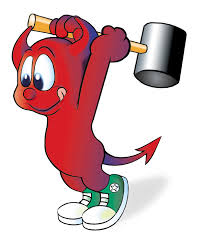I have a postwar 736 Berkshire that is in need of a motor cleaning. I have not cleaned the motor on this engine before. When I go to undo the screws holding the black plastic cover on, one comes out fine but the other just spins and spins. On the back of the motor, there is the rounded end to some sort of screw sleeve that goes throw the motor. The sleeve is spinning with the screw. This makes it impossible to remove the screw and clean the motor.
Do any of you have a solution to preventing the screw from spinning? I've already tried holding the sleeve end with a pair of pliers, but that does not do anything.
Also note that the end of the screw sleeve has a crack in the part that is rounded. If anyone has any idea how to remove the screw please leave a reply. Pictures below. Thank you.






